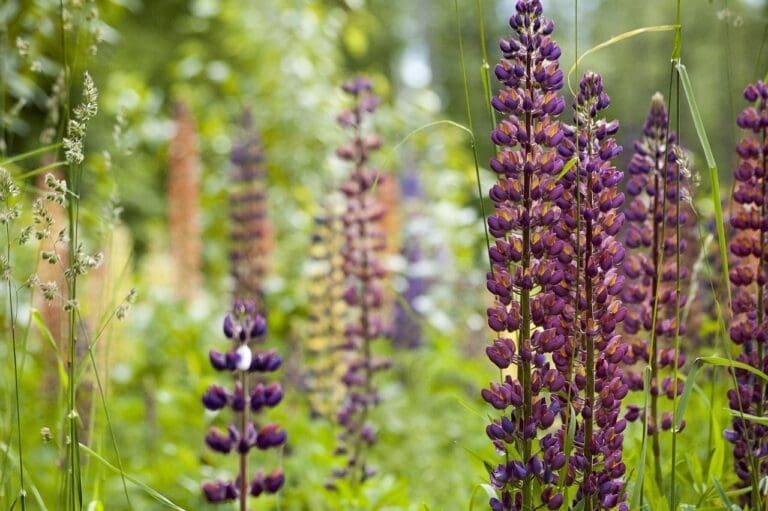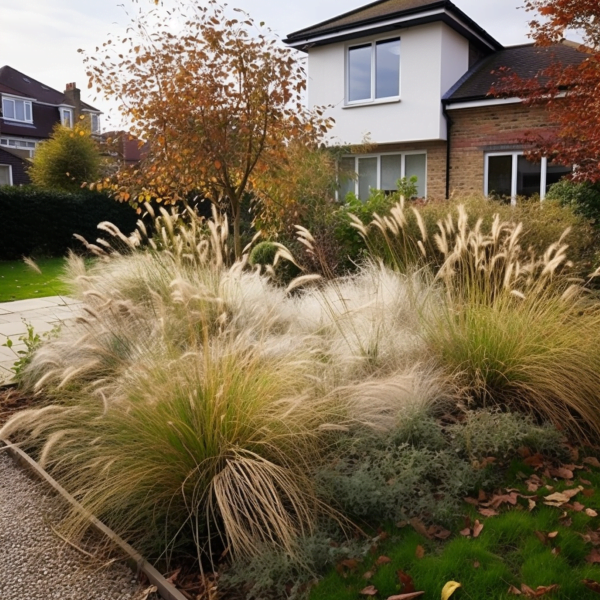Experience tranquillity in your backyard with these captivating Japanese-style garden ideas. Renowned for their peaceful simplicity and natural allure, Japanese gardens offer a serene sanctuary. By incorporating some of these design tips you can easily craft a soothing Japanese style retreat right at home.
You might also be interested in: 11+ Boho Style Garden Ideas
Affiliate Disclaimer: As an Amazon Associate, I earn from qualifying purchases.
1. Evergreen Plants for Year-Round Structure
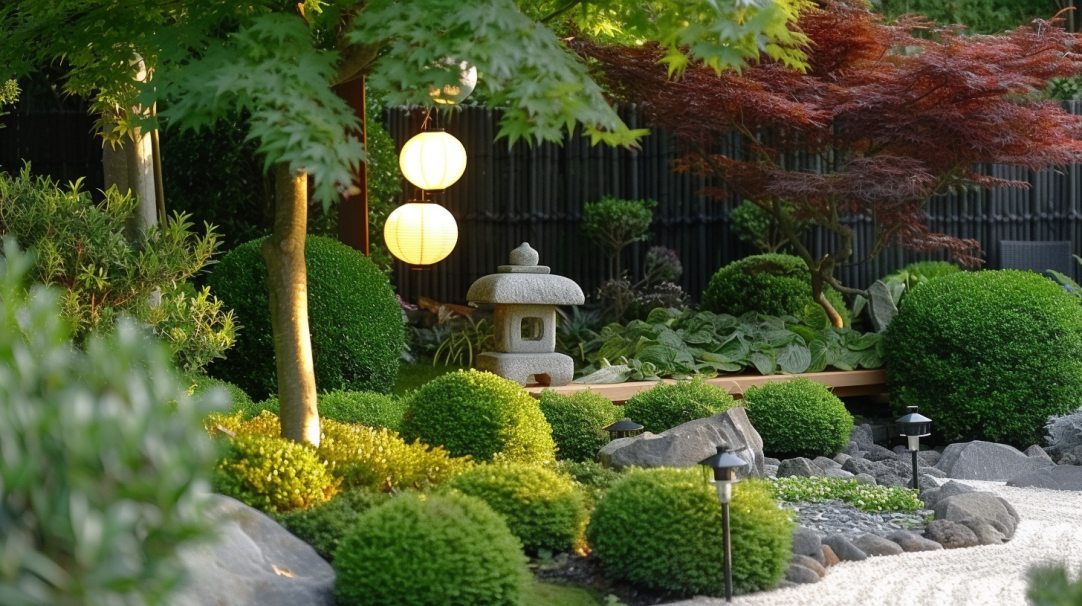
Evergreen plants are vital in Japanese-style gardens, providing year-round structure and stability to the space. Their enduring presence contrasts beautifully with the seasonal changes of flowers and moss, ensuring a consistent visual anchor throughout the year. Thoughtfully incorporating evergreens establishes a lasting focal point, enhancing the garden’s tranquillity and timeless appeal.
2. Versatile and Symbolic Bamboo
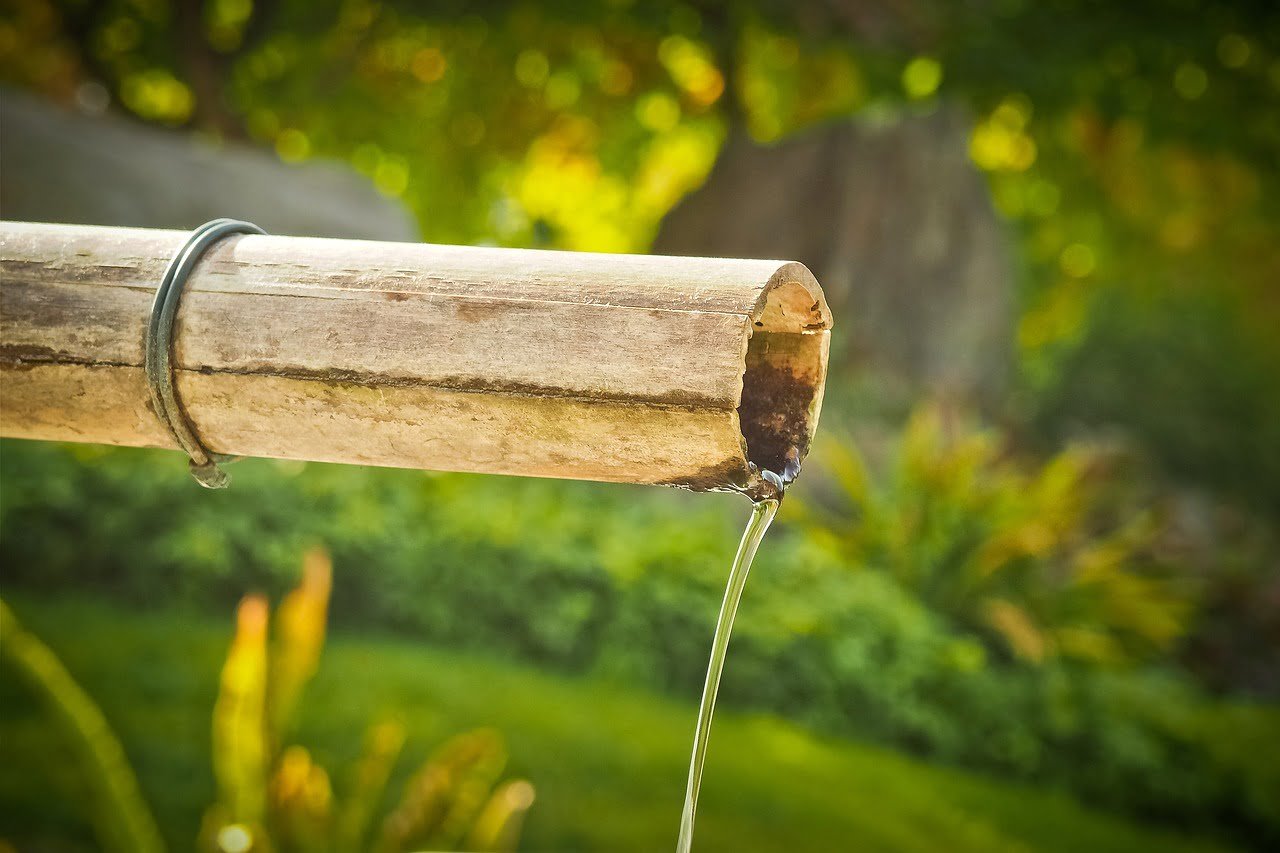
Bamboo lends itself to a variety of uses in Japanese gardens, from bamboo fencing to water features. Different bamboo species have unique characteristics – some are tall and upright while others have arching forms. Bamboo evokes simplicity, naturalness, and persistence. Use it creatively to complement your garden’s style. Bamboo screening rolls are a great way to create privacy in your Japanese style garden.
3. Tea Houses for Tranquillity
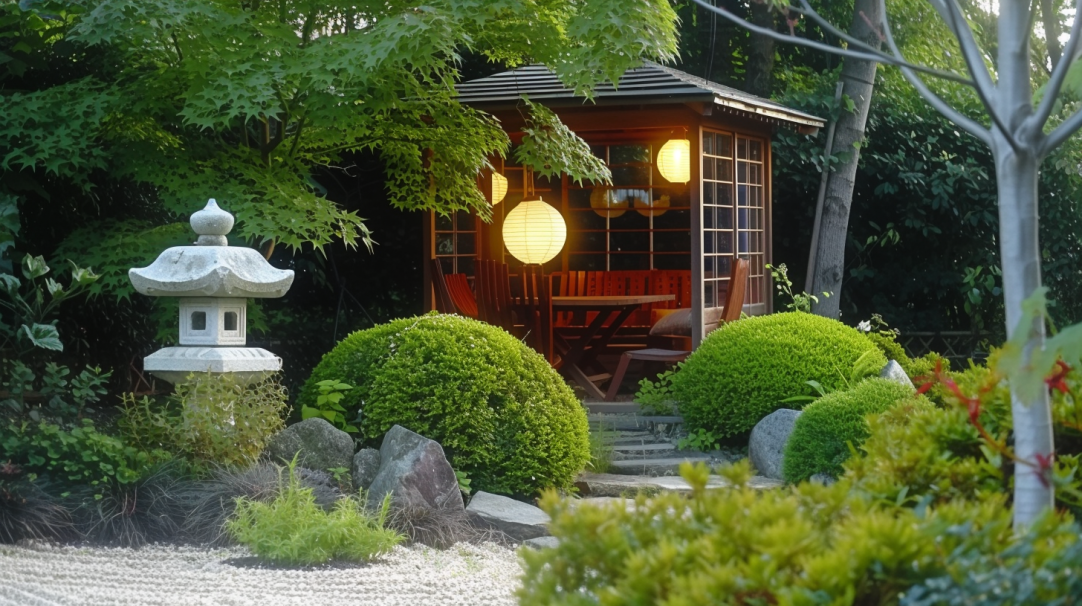
Incorporate a small tea house into your garden to serve as a serene spot for quiet contemplation. Tea houses reflect Japanese values of simplicity and mindfulness. Use natural materials and muted colours when designing your tea house. Tuck it away in a secluded corner or feature it prominently overlooking your garden.
4. Moss for Natural Serenity
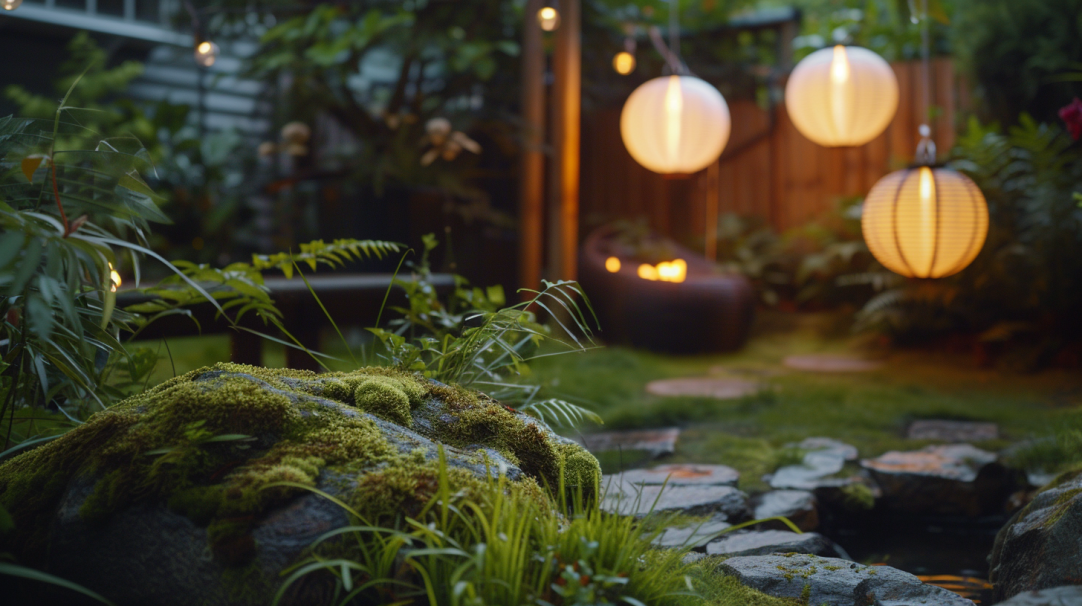
A moss groundcover creates a deeply peaceful atmosphere with its soft green hues. Many types of moss thrive in shady, humid conditions. Maintain moisture and gentle sunlight for lush moss growth. Let moss grow between stepping stones or boulders for a seamless natural look.
5. Textured Elements for Visual Interest
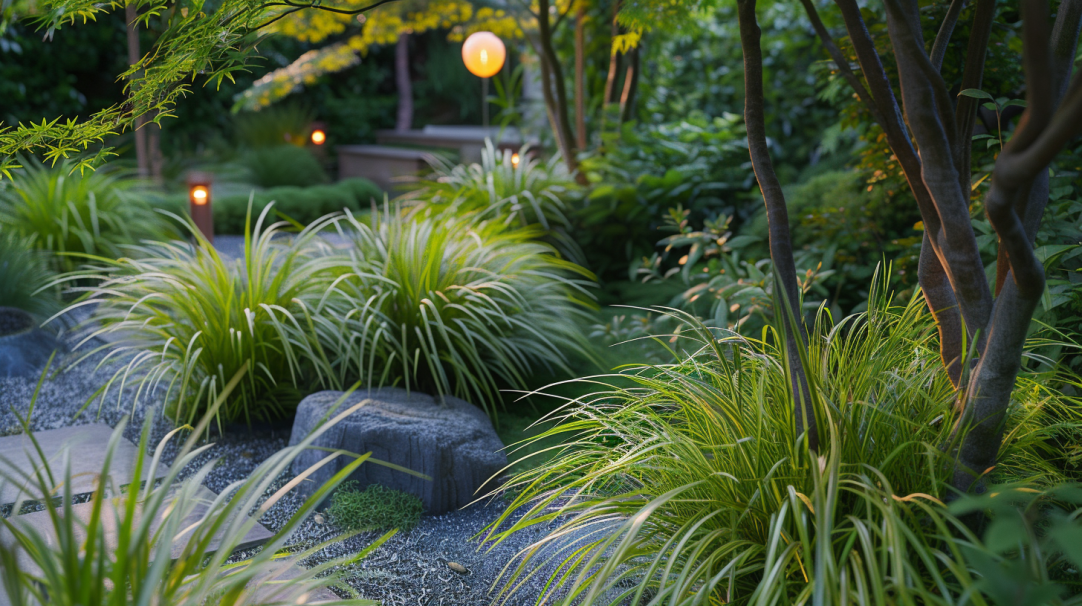
Incorporate rocks, pebbles, and raked gravel to add tactile variety and depth. Rough textured stones contrast beautifully with smooth gravel, creating engaging spaces to wander through. Position textural accents thoughtfully, using gravel or pebbles to delineate specific garden features. Ornamental grasses such as Hakonechloa Macra (Japanese Forest Grass) is perfect for bringing a touch of elegance and texture to shaded areas of the garden
6. Raked Gravel Patterns
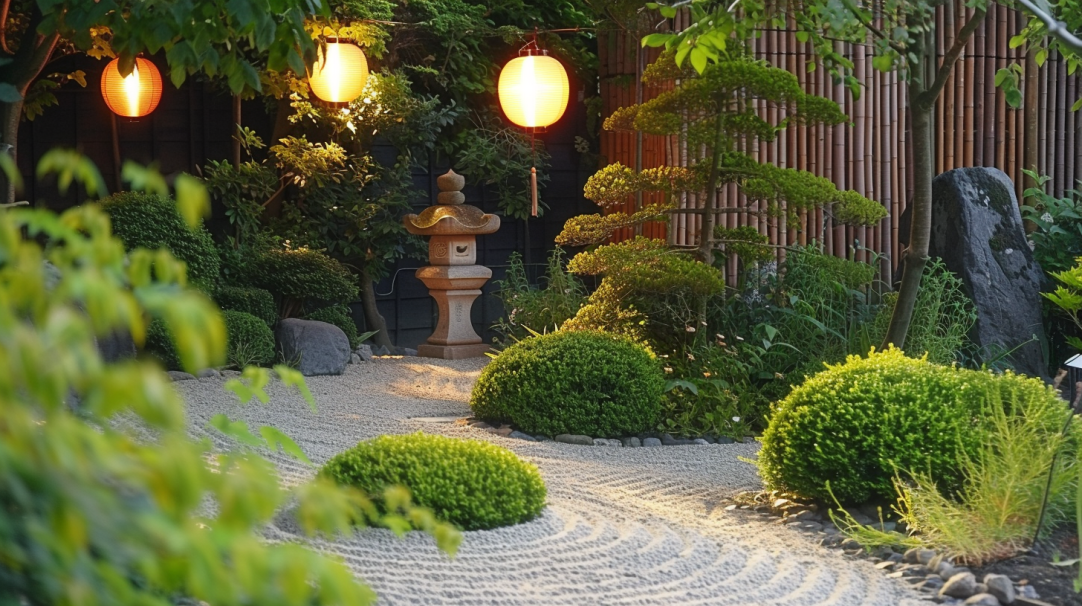
Raked gravel patterns are an iconic feature of Japanese gardens. The repetitive motion of raking gravel into ripples or waves has a meditative quality. Start by choosing a gravel type and colour that complements your garden, such as tan pea gravel or pale grey stones. Rake the gravel in straight lines or concentric curves emanating from large rocks or plantings. This helps the gravel appear like the flow of water.
For added texture, alternate smooth raked areas with small mounds of unraked gravel. Maintain the patterns by periodically re-raking displaced gravel. Well-executed gravel designs look simple yet striking, bringing a sense of fluidity and movement to the garden space.
7. Careful Plant Selection for Harmony

Choose plants that align with the tranquil Japanese aesthetic. Flowering cherry trees, rhododendrons, Japanese maples, and iris bring seasonal delights. Evergreen shrubs and perennials like azaleas, bamboos, and ferns also help achieve the perfect visual balance and harmony.
8. Wandering Paths for Discovery
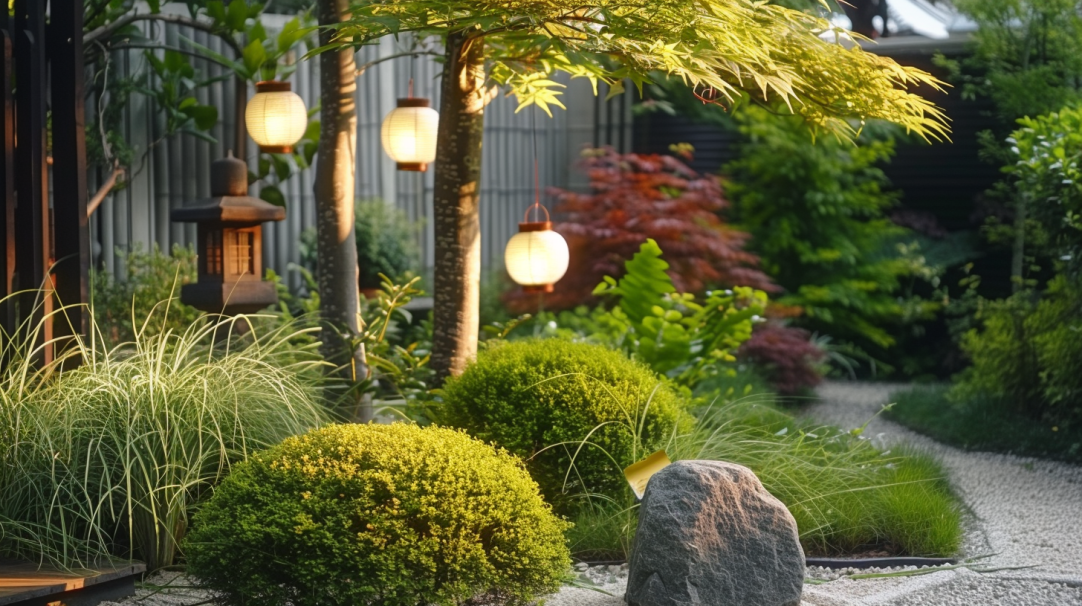
Winding, natural-looking paths encourage gradual reveals and a spirit of discovery within the garden. Use local materials like stone, gravel, or wood to craft pathways that seem to disappear mysteriously around bends. Stepping stones across moss or ponds add to the magical feel. If your budget allows, its worth checking out CORE EDGE outdoor metal edging strips, as these will help you to create perfect and long lasting curves.
9. Ornaments and Sculptures for Symbolism
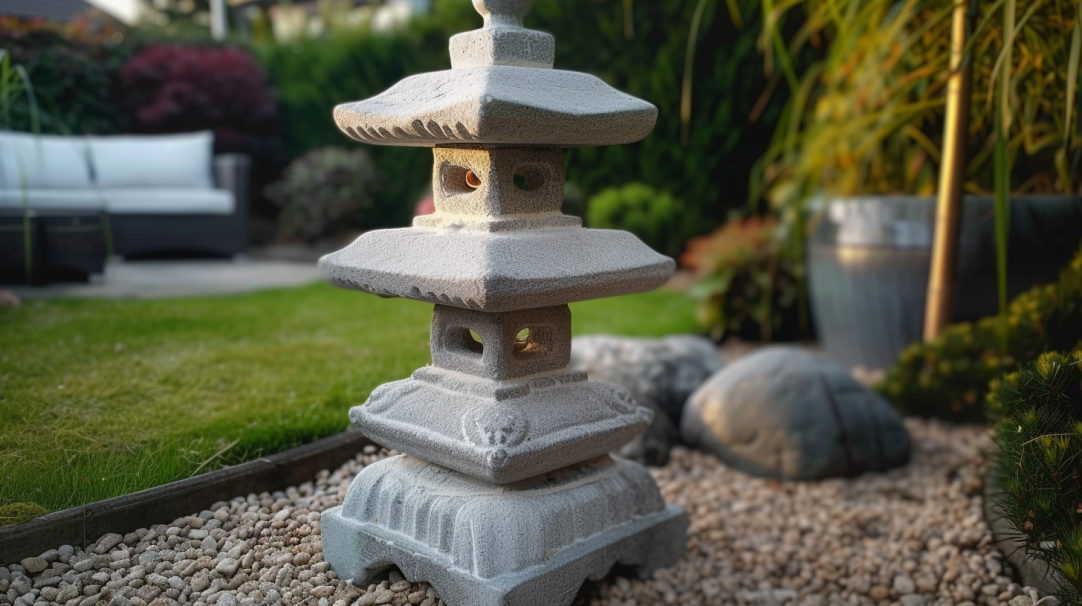
Japanese style ornaments, lanterns, and water basins placed thoughtfully around the garden infuse symbolic meaning and enhance the ambiance. Opt for natural, earthy materials when choosing these decorations. Consider the ornament’s size, style, and placement carefully to complement the overall space.
10. Bridges Represent Transition
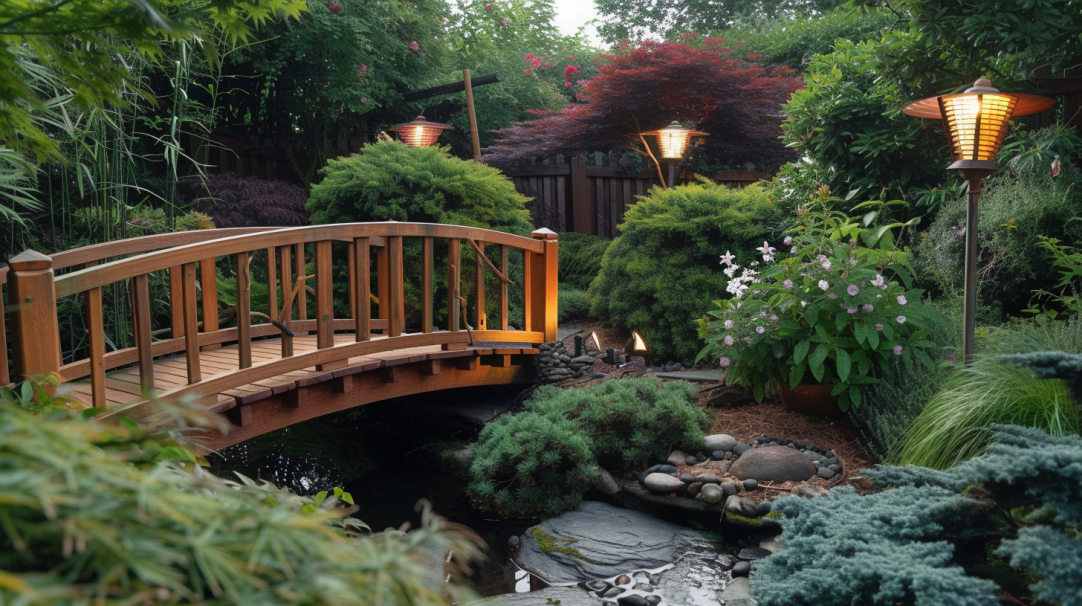
Crossing a bridge symbolizes the transition from one space or feeling to another. Naturalistic stone slab bridges work well for larger gardens, while wooden arched bridges are perfect for smaller spaces. Position your bridge thoughtfully to create a sense of anticipation about what lies beyond.
11. Cloud Pruning for Organic Shapes
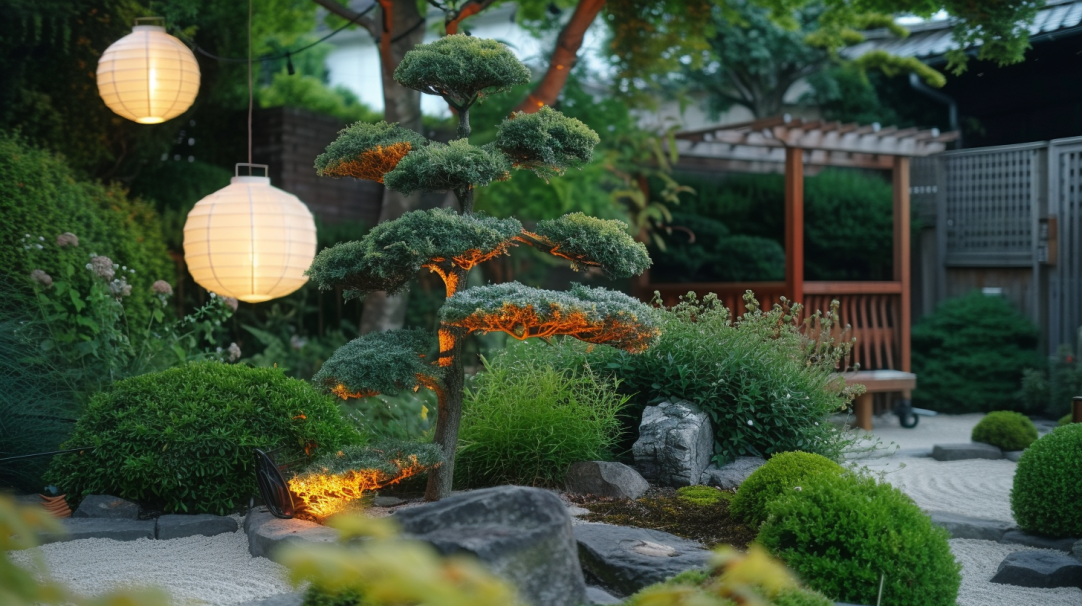
The Japanese art of cloud pruning shapes trees and shrubs into soft, billowy forms evoking clouds or waves. It takes patience and specialized techniques to achieve these poetic shapes. Cloud-pruned plants add sculptural beauty and natural symbolism, perfect for a Japanese garden.
12. Subtle Lighting After Dark
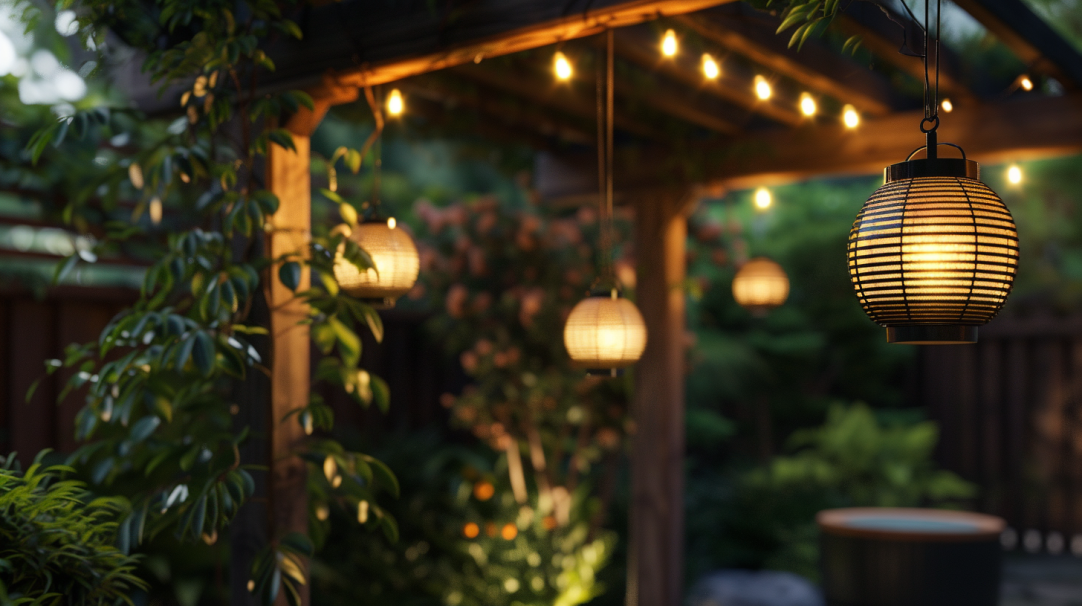
Strategically placed lighting transforms your Japanese garden into a magical night-time oasis. Use lanterns, path lights and spotlights to illuminate focal points without excessive glare. Go for a subtle, warm lighting scheme to enhance the peaceful atmosphere after dusk.
What is Japandi Style Garden Design?
Japandi style is a popular hybrid of Japanese and Scandinavian design influences. It blends simple, natural elements with clean lines and practicality. A Japandi garden features core Japanese components like gravel, boulders, and evergreens mixed with Scandinavian principles such as functionality, minimalism, and a muted colour palette. Touches like painted wooden planter boxes, woven rattan pendant lights, and outdoor furniture with straight lines bring in Scandinavian elements. The overall effect is a serene, breezy, and uncluttered look and feel. Japandi garden spaces evoke tranquillity yet remain conducive to entertaining and everyday enjoyment. This fusion style works well in contemporary gardens and smaller courtyards.
Final Thoughts
When crafting your own Japanese-inspired garden, there are a few other elements worth considering. Water features like koi ponds or bamboo fountains add soothing sounds and become focal points. Pagodas and Japanese maple trees immediately evoke the garden aesthetic. For smaller spaces, bonsai trees and ikebana floral arrangements incorporate minimalist principles. To delineate different zones within the garden, utilize white gravel as a “sea” between “islands” of moss and plantings. Plan for views and vistas where visitors can pause and reflect at various spots. Work with a local landscape designer if needed to bring your Japanese garden ideas to life in a tasteful, cohesive way. Take inspiration from public Japanese gardens, but make the space uniquely your own.
FAQs – Japanese Style Garden Ideas
Q. How much does it cost to create a Japanese garden?
Budgets can vary greatly depending on the size and features involved. Small backyard spaces may cost only a few hundred pounds for materials and plants. More expansive designs with bridges, water features or tea houses carry higher price tags. Focus first on simple elements like gravel, stones and evergreens.
Q. What is the best time to plant a Japanese garden?
In the UK climate, it’s best to plant new trees, shrubs and perennials in Japanese gardens during autumn or spring when conditions are mild and rainfall plentiful. This helps new plants establish healthy roots before heat, cold or drought.
Q. How do I care for a Japanese garden?
General upkeep involves watering, occasional pruning, fertilizing, moss care and weed control. Pathways will need raking. Pay attention to individual plant needs. Periodic thinning of tree canopies allows more light in. Reflective tasks like raking gravel can be meditative.
Q. Where can I find more information about Japanese gardens?
Books from your local library or garden centre can provide helpful insights. Specialist Japanese nurseries also offer inspiration. Look for UK-based resources that factor in our climate. There are also many blogs and websites dedicated to Japanese garden style and maintenance. Pinterest has some really good Japanese style garden images if you need further inspiration.
Q. Can I create a small Japanese garden?
Absolutely. Even apartment dwellers can incorporate essential elements like peaceful plantings, gravel, stepping stones and lanterns in their outdoor spaces. Focus on a few details that evoke nature and simplicity rather than trying to recreate large-scale Japanese gardens.

